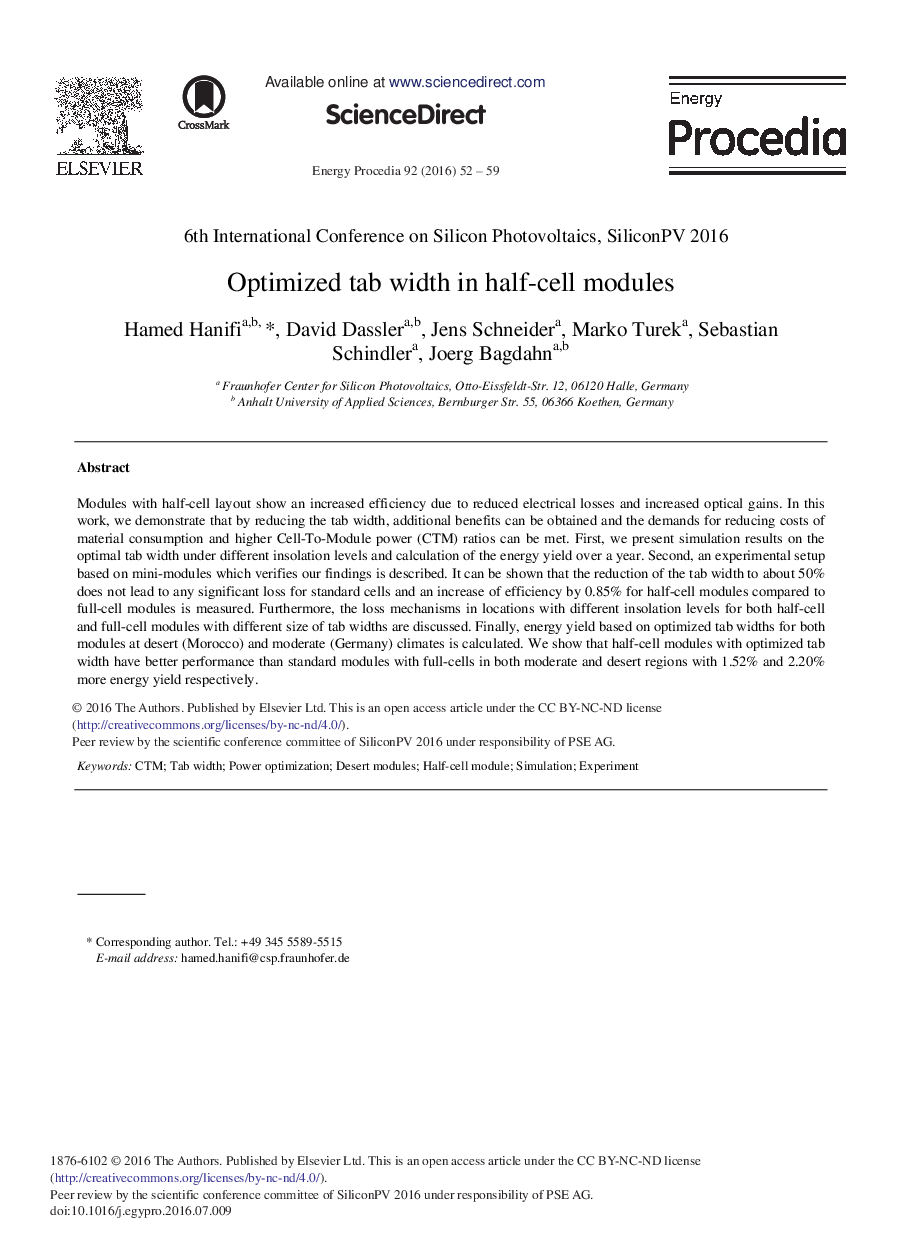| Article ID | Journal | Published Year | Pages | File Type |
|---|---|---|---|---|
| 5446558 | Energy Procedia | 2016 | 8 Pages |
Abstract
Modules with half-cell layout show an increased efficiency due to reduced electrical losses and increased optical gains. In this work, we demonstrate that by reducing the tab width, additional benefits can be obtained and the demands for reducing costs of material consumption and higher Cell-To-Module power (CTM) ratios can be met. First, we present simulation results on the optimal tab width under different insolation levels and calculation of the energy yield over a year. Second, an experimental setup based on mini-modules which verifies our findings is described. It can be shown that the reduction of the tab width to about 50% does not lead to any significant loss for standard cells and an increase of efficiency by 0.85% for half-cell modules compared to full-cell modules is measured. Furthermore, the loss mechanisms in locations with different insolation levels for both half-cell and full-cell modules with different size of tab widths are discussed. Finally, energy yield based on optimized tab widths for both modules at desert (Morocco) and moderate (Germany) climates is calculated. We show that half-cell modules with optimized tab width have better performance than standard modules with full-cells in both moderate and desert regions with 1.52% and 2.20% more energy yield respectively.
Related Topics
Physical Sciences and Engineering
Energy
Energy (General)
Authors
Hamed Hanifi, David Dassler, Jens Schneider, Marko Turek, Sebastian Schindler, Joerg Bagdahn,
